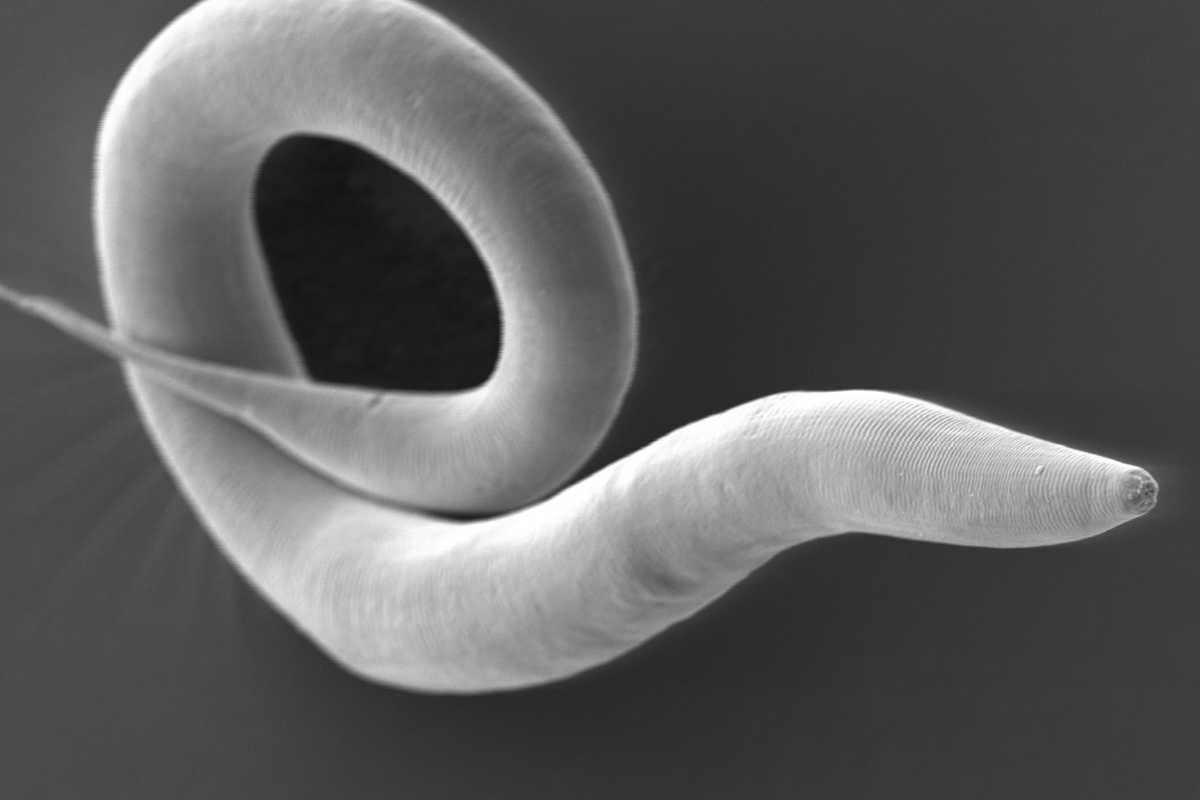
This is the view of American researchers who previously discovered that the same roundworm, despite not having eyes, can detect light.
That can be read in the magazine neuron. The research article in question deals with the roundworm Caenorhabditis elegans. Until about fifteen years ago it was believed that the worm – a model organism frequently used by researchers – possessed only three senses: taste, touch and smell. But researcher Shawn Xu and colleagues have shown in recent years that the roundworm — despite having no eyes — can also sense light. In addition, the roundworm has proprioception or position sense, which means that it is able to perceive the position of its own body while it is moving. “There was only one primary sense that was missing – hearing,” said Xu.
special
And also about that sense it turns out C. elegans so now available. And that is quite remarkable. In the first place, of course, because the roundworm has no ears. But secondly, because hearing is a very special sense. “Hearing is unlike the other senses we encounter in many other tribes within the animal kingdom. It has actually only been discovered in vertebrates and some arthropods. Thus, the vast majority of invertebrates are believed not to be sensitive to sounds.”
Experiments
Experiments have shown that the invertebrate roundworm is capable of perceiving sound. The researchers made the worms hear sounds with a frequency between 100 hertz and 5 kilohertz. And as soon as those sounds were played, the worms ran away. They moved away from the sound source. It proves not only that they are able to perceive the sounds, but also that they can determine where those sounds are coming from.
hearing
The researchers ran a few more experiments to make sure the worms responded to sound waves in the air and not to the vibrations of the surface they were on. After all, in the latter case there would be hearing, but the worms would appeal to their sense of touch. However, that turned out not to be the case.
Hearing without ears
But how can the worms ‘hear’ without ears? Xu and colleagues have ideas about that. They think that the worms can perceive the tones because their entire body serves as a snail’s shell, as it were; the spiral, fluid-filled space in the inner ear that allows vertebrates—such as humans—to perceive sounds.
So how exactly does it work?
Xu and colleagues point out that the worms have two types of auditory neurons that are closely linked to the skin. When sound waves hit the worm’s skin, that skin vibrates. And then the liquid in the worm also starts to vibrate, just like the liquid in our cochlea is made to vibrate by sound waves. Those vibrations activate the auditory neurons. And those neurons translate the vibrations back into nerve impulses. Because the worms have two types of auditory neurons that are also found in two different parts of the body, the worms can also determine – based on the type of neuron that is activated by the vibrations – where the sound is coming from.
Evolution
Although there are similarities between how C. elegans perceives sounds and how, for example, we do this, Xu considers it unlikely that we owe this ability to a shared ancestor. Instead, organisms in different tribes have acquired this sense independently of each other through evolution. “It is in stark contrast to the evolution of vision which – as Charles Darwin suggested – arose quite early and probably only once in a common ancestor.”
The fact that C. elegans can of course raise the question whether other species related to the roundworm are also capable of this. For example, consider flatworms and earthworms. Xu certainly doesn’t rule it out. “Our study shows that we can’t just assume that an animal that doesn’t have ears can’t hear either.”
Source material:
“Earless worms ‘listen’ through their skin” – University of Michigan
Image at the top of this article: Antje Thomas, Hinrich Schulenburg, Kiel University